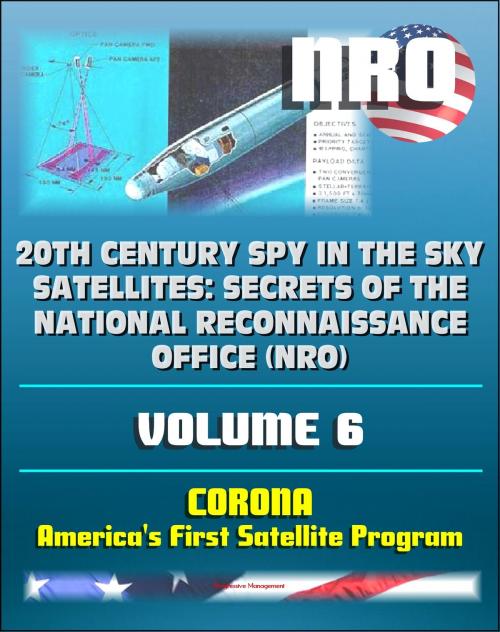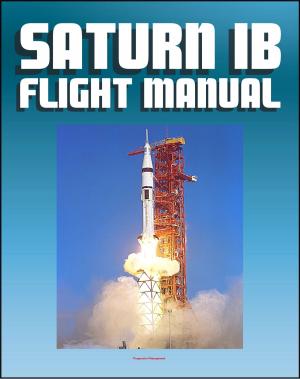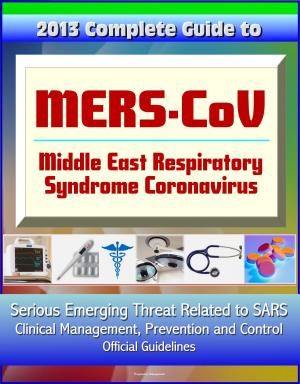20th Century Spy in the Sky Satellites: Secrets of the National Reconnaissance Office (NRO) Volume 6 - CORONA, America's First Satellite Program - CIA and NRO Histories of Pioneering Spy Satellites
Nonfiction, Science & Nature, Science, Physics, Astronomy, History, Military| Author: | Progressive Management | ISBN: | 9781466194021 |
| Publisher: | Progressive Management | Publication: | October 29, 2011 |
| Imprint: | Smashwords Edition | Language: | English |
| Author: | Progressive Management |
| ISBN: | 9781466194021 |
| Publisher: | Progressive Management |
| Publication: | October 29, 2011 |
| Imprint: | Smashwords Edition |
| Language: | English |
Part of our comprehensive series on the National Reconnaissance Office (NRO) and its "spy satellite" network, this volume covers the historic CORONA spy satellite program, called America's first satellite program. Histories from the NRO and the Central Intelligence Agency (CIA) cover all aspects of CORONA.
Since the CORONA satellite made its first successful flight in August 1960, the Intelligence Community's overhead reconnaissance programs have been among the nation's most closely guarded secrets. The end of the Cold War, however, has at last made it possible to declassify both information and imagery from the first American satellite systems of the 1960s.
The CORONA reconnaissance satellites revolutionized the collection of intelligence in the 1960s. This was a time when it was still extraordinarily difficult to gather information by any other means from "denied areas" including the Soviet Union, Communist China, and their allies. The need for intelligence about Soviet strategic weapon systems and bases dramatically increased after 1 May 1960, when the Soviets shot down an American U-2 aircraft and captured its CIA pilot, Francis Gary Powers. Within a few months, however, on 18 August the United States launched its first successful reconnaissance satellite, which in one mission provided more photographic coverage of the Soviet Union than all previous U-2 missions. On 19 August 1960, the recovery of Mission 9009 with a KH-1 camera marked the beginning of the CORONA reconnaissance satellite program's long and valuable service. The story of this program's success is one of the most remarkable in the annals of American science and intelligence.
While orbiting the earth, CORONA concentrated principally on photographing the USSR and China. One intelligence community study summarized CORONA's efforts over the Soviet Union: CORONA's initial major accomplishment was imaging all Soviet medium-range, intermediate-range, and intercontinental ballistic missile launching complexes. CORONA also identified the Plesetsk Missile Test Range, north of Moscow. Repetitive coverage of centers like Plesetsk provided information as to what missiles were being developed, tested, and/or deployed. Also, the unequivocal fact of observation gave the United States freedom from concern over many areas and locations which had been suspect in the past.
NRO designs, builds and operates the nation's reconnaissance satellites. NRO products, provided to an expanding list of customers like the Central Intelligence Agency (CIA) and the Department of Defense (DoD), can warn of potential trouble spots around the world, help plan military operations, and monitor the environment. As part of the 16-member Intelligence Community, the NRO plays a primary role in achieving information superiority for the U. S. Government and Armed Forces. A DoD agency, the NRO is staffed by DoD and CIA personnel. It is funded through the National Reconnaissance Program, part of the National Foreign Intelligence Program. The NRO Vision: Vigilance From Above. NRO Mission: Innovative Overhead Intelligence Systems for National Security. In recent years, the NRO has implemented a series of actions declassifying some of its operations. The organization was declassified in September 1992 followed by the location of its headquarters in Chantilly, VA, in 1994.
Part of our comprehensive series on the National Reconnaissance Office (NRO) and its "spy satellite" network, this volume covers the historic CORONA spy satellite program, called America's first satellite program. Histories from the NRO and the Central Intelligence Agency (CIA) cover all aspects of CORONA.
Since the CORONA satellite made its first successful flight in August 1960, the Intelligence Community's overhead reconnaissance programs have been among the nation's most closely guarded secrets. The end of the Cold War, however, has at last made it possible to declassify both information and imagery from the first American satellite systems of the 1960s.
The CORONA reconnaissance satellites revolutionized the collection of intelligence in the 1960s. This was a time when it was still extraordinarily difficult to gather information by any other means from "denied areas" including the Soviet Union, Communist China, and their allies. The need for intelligence about Soviet strategic weapon systems and bases dramatically increased after 1 May 1960, when the Soviets shot down an American U-2 aircraft and captured its CIA pilot, Francis Gary Powers. Within a few months, however, on 18 August the United States launched its first successful reconnaissance satellite, which in one mission provided more photographic coverage of the Soviet Union than all previous U-2 missions. On 19 August 1960, the recovery of Mission 9009 with a KH-1 camera marked the beginning of the CORONA reconnaissance satellite program's long and valuable service. The story of this program's success is one of the most remarkable in the annals of American science and intelligence.
While orbiting the earth, CORONA concentrated principally on photographing the USSR and China. One intelligence community study summarized CORONA's efforts over the Soviet Union: CORONA's initial major accomplishment was imaging all Soviet medium-range, intermediate-range, and intercontinental ballistic missile launching complexes. CORONA also identified the Plesetsk Missile Test Range, north of Moscow. Repetitive coverage of centers like Plesetsk provided information as to what missiles were being developed, tested, and/or deployed. Also, the unequivocal fact of observation gave the United States freedom from concern over many areas and locations which had been suspect in the past.
NRO designs, builds and operates the nation's reconnaissance satellites. NRO products, provided to an expanding list of customers like the Central Intelligence Agency (CIA) and the Department of Defense (DoD), can warn of potential trouble spots around the world, help plan military operations, and monitor the environment. As part of the 16-member Intelligence Community, the NRO plays a primary role in achieving information superiority for the U. S. Government and Armed Forces. A DoD agency, the NRO is staffed by DoD and CIA personnel. It is funded through the National Reconnaissance Program, part of the National Foreign Intelligence Program. The NRO Vision: Vigilance From Above. NRO Mission: Innovative Overhead Intelligence Systems for National Security. In recent years, the NRO has implemented a series of actions declassifying some of its operations. The organization was declassified in September 1992 followed by the location of its headquarters in Chantilly, VA, in 1994.















